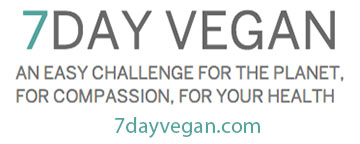By Rich Roll, Author & Ultra-Distance Triathlete
“But where do you get your protein?”
As a plant-based ultra-endurance athlete, if I had a dollar for every time I fielded this inquiry, I could put my four kids through college. So let’s address the elephant in the room, once and for all.
We live in a society in which we have been mistakenly led to believe that meat and dairy products are the only source of dietary protein worthy of merit. Without copious amounts of animal protein, it’s impossible to be healthy, let alone perform as an athlete, train and race at your peak. The message is everywhere – from a recent high profile dairy lobby ad campaign pushing chocolate milk as the ultimate athletic recovery beverage to compelling food labels to a dizzying array of fitness expert testimonials. Protein, protein, protein — generally reinforced with the adage that more is better.
Whether you are a professional athlete or a couch potato, this hardened notion is so deeply ingrained into our collective belief system that to challenge its propriety is nothing short of anathema. But through direct experience I have come to believe that this pervasive notion is at best misleading, if not altogether utterly false, fueled by a well funded campaign of disinformation perpetuated by powerful and well-funded meat and dairy lobbies that have spent countless marketing dollars to convince society that we absolutely need these products to live. The animal protein push is not only based on lies, it’s killing us, luring us to feast on a rotunda of factory farmed, hormone and pesticide induced foods generally high in artery-clogging saturated fat, a significant contributing factor to our epidemic of heart disease and a number of many other congenital infirmities.
Indeed, protein is an essential nutrient, absolutely critical not just in building and repairing muscle tissue, but in the maintenance of a wide array of important bodily functions. But does it matter if our protein comes from plants rather than animals? And how much do we actually need?
Proteins consist of twenty different amino acids, eleven of which can be synthesized naturally by our bodies. The remaining nine – what we call essential amino acids – must be ingested from the foods we eat. So technically, our bodies require certain amino acids, not protein per se. But these nine essential amino acids are hardly the exclusive domain of the animal kingdom. In fact, they’re originally synthesized by plants and are found in meat and dairy products only because these animals have eaten plants. Admittedly, plant-based proteins are absorbed differently than animal proteins. And not all plant-based proteins are “complete”, containing all nine essential amino acids – two arguments all too often raised to negate the advisability of shunning animal products. But in truth, a well-rounded whole food plant-based diet that includes a colorful rotation of foods like sprouted grains, nuts, seeds, vegetables and legumes will satisfy the demanding protein needs of even the hardest training athlete – without the saturated fat that gives us heart disease, the casein that has been linked to a variety of congenital diseases, or the whey – a low grade, highly processed discard of cheese production.
Just ask MMA/UFC fighters like Mac Danzig, Jake Shields or James Wilks. Triathletes like Brendan Brazier, Hillary Biscay or Rip Esselstyn. Ultramarathoner extraordinaire Scott Jurek. Or undefeated boxer Timothy Bradley, Jr. who recently defeated Manny Pacquiao. They will all tell you the same thing: rather than steak, milk, eggs and whey supplements, opt instead for healthy plant-based protein sources like black, kidney and pinto beans, almonds, lentils, hemp seeds, spirulina, quinoa, spinach and broccoli.
Provided your diet contains a rotating variety of the aforementioned high protein plants, I can absolutely guarantee that you will never suffer a protein deficiency – it’s impossible. Despite the incredibly heavy tax I impose on my body, training at times upwards of 25 hours per week for ultra-endurance events, this type of regimen has fueled me for years without any issues with respect to building lean muscle mass and properly recovering between workouts. In fact, I can honestly say that at age 46, I am fitter than I have ever been, even when I was competing as a swimmer at a world-class level at Stanford in the late 1980’s.
And despite what you might have been told, I submit that more protein isn’t better. Satisfy your requirement and leave it at that. With respect to athletes, to my knowledge no scientific study has ever shown that consumption of protein beyond the RDA advised 10 percent of daily calories stimulates additional muscle growth or expedites physiological repair induced by exercise stress. In fact, and over the long-term, excessive animal protein intake can be harmful. Not only is there evidence that it is often stored in fat cells, it contributes to the onset of a variety of congenital diseases such as osteoporosis, cancer, impaired kidney function and heart disease.
Still not convinced? Consider this: some of the fiercest animals in the world are plant powered. The elephant, rhino, hippo and gorilla share one thing in common – they all get 100% of their protein from plants. So ditch that steak and join me for a bowl of quinoa and lentils.
Read more on Protein for Vegans.
Rich is an ultra-distance triathlete, plant-based nutrition advocate, author of the #1 bestselling book FINDING ULTRA: Rejecting Middle Age, Becoming One of the World’s Fittest Men, and Discovering Myself (Crown / Random House) and host of The Rich Roll Podcast. For more information on, visit RichRoll.com.
